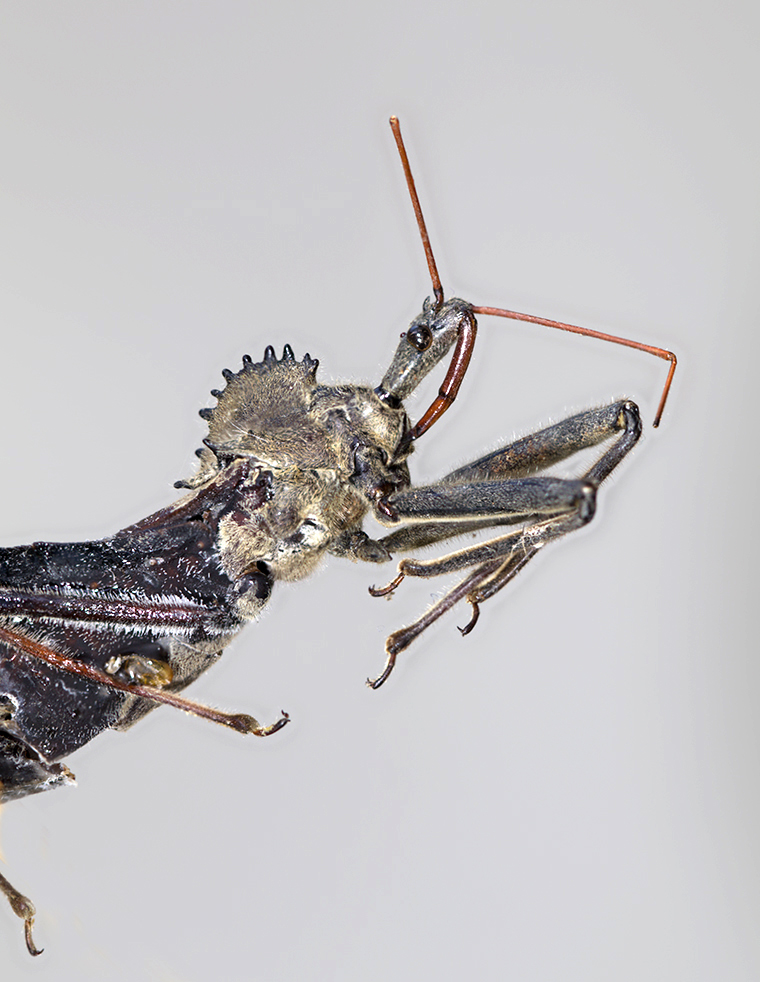Suppose you had heard of an insect called a “wheelbug”, but you had no clue about what this creature might be. I bet it would not take you long to guess that the insect in the photograph below was a wheelbug.

Sure enough, it has a “wheel” on its back. The wheel bug is easily identified because it is the only insect in the U.S. ,which has such a wheel-like, cogged crest. The function of the crest is unknown, but it may be some sort of armor.
This particular specimen, which is (Arilus cristatus), showed up on our back deck in the fall. It was already moribund; adult wheelbugs all die in the fall. They overwinter as eggs.
The Wheelbug is a true bug (that is it is a member of the order Hemiptera). This group of insects is characterized by having mouth parts fused into a tube-like beak. To feed, members of this group insert (or stab) their intended prey item with this tube. They then inject digestive enzymes which dissolve the cellular contents of the prey. The bugs then suck up the now liquidized cellular content to feed. You can see this specimen’s proboscis folded back under its head. As a group, these insects are called “assassin” bugs for their habit of sneaking up on their prey and stabbing it.
Many true bugs feed on plants, but the Wheelbug feeds exclusively on other insects. They grasp their prey with their front pair of legs, extend their long proboscis to stab the victim. As a good point, Wheelbugs are able to feed on Brown Marmorated Stink Bug, Halyomorpha halys, an alien insect which has become a pest in some areas. As a cautionary note, if you find it desirable to handle an assassin bug, be careful. They are able to give quite a sting, which is said to be as painful as a bee or hornet sting.
